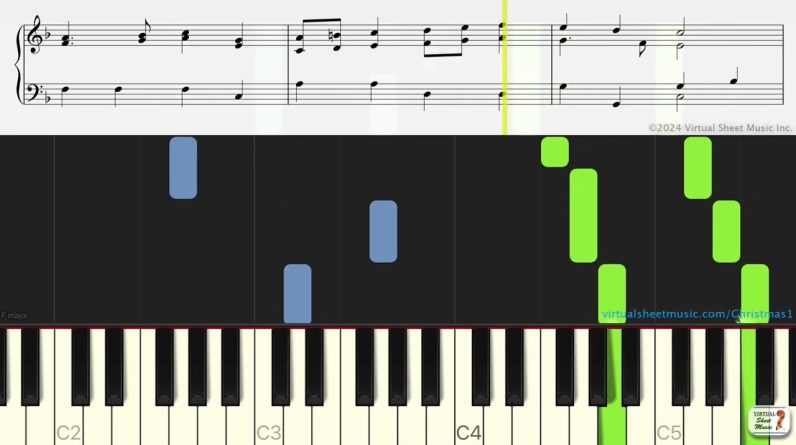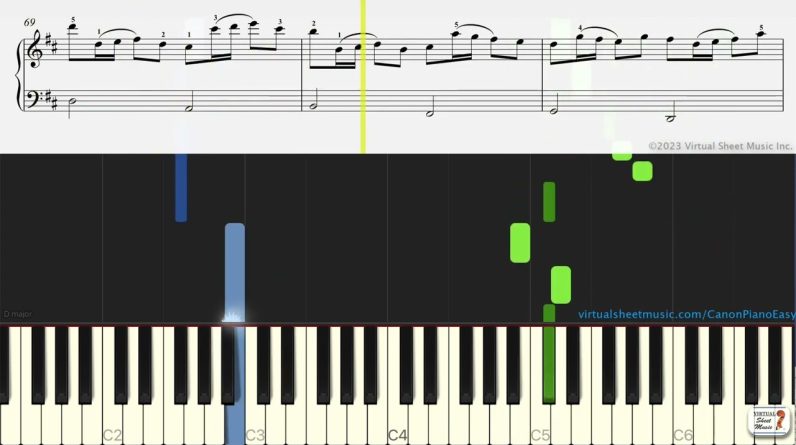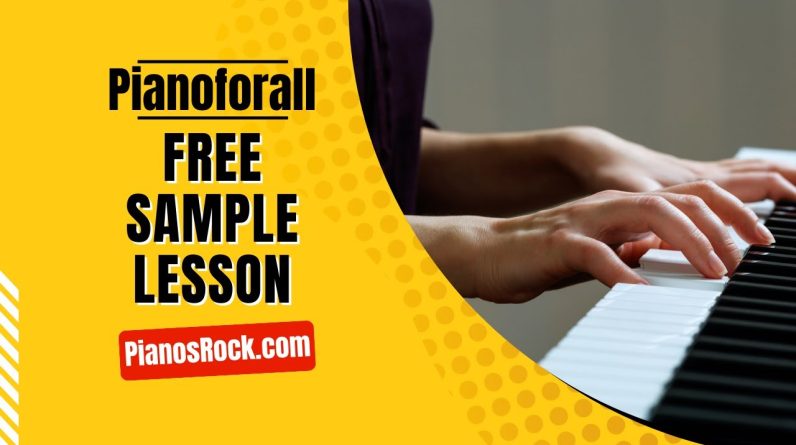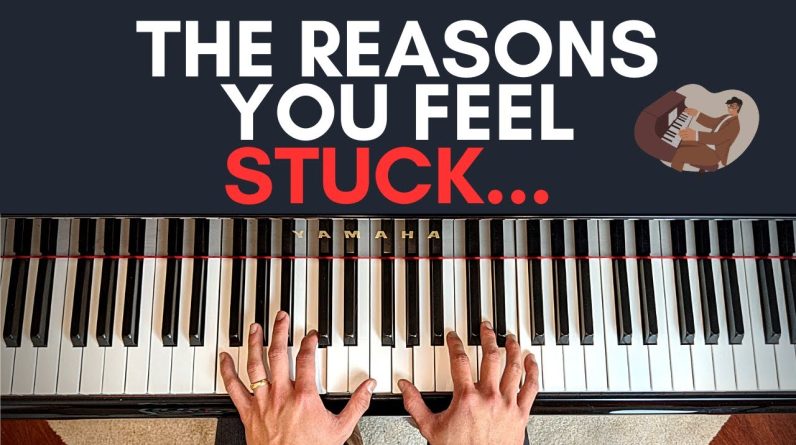Learn How to Play Idiomatic Blues Piano Patterns for Both the Right and Left Hand
Also, understand the concept of ”Swing” and the Charleston rhythm.
This is Part B of Jason Zac’s 3-part series on Blues Piano
Part A: 12 Bar Blues Piano for Beginners
Understanding the 12 bar blues chord progression and song form (phrase structure) with singing and piano accompaniment. We break down the chords, their shapes and develop a simple but effective rhythm pattern to accompany our vocals with a Blues classic, “I’m Tore Down”
Part B: The Best Blues Piano Patterns for Both Hands
Develop a solid Blues foundation by learning a Left hand and Right-hand chord pattern used in almost every single Blues Rock hit. Also, understand swing and develop a solid method to counting blues rhythms
Part C: How to Create a Blues Solo on Piano
Learn how to form the Blues scales from their respective pentatonic scales (Major & Minor) and then learn how to create a melodic and lyrical Piano solo over the 12 bar blues form
00:00 – Blues Performance
00:24 – Introduction Part B (Left & Right Hand Patterns)
01:05 – Left Hand Blues Pattern
04:30 – Eighth Note Embellishment
06:15 – “Charleston Rhythm” for the Right Hand with Dynamics
09:20 – Putting it all together with singing
10:08 – Using the Dominant 7th chord for more Blues flavor
11:52 – Conclusion and Part 3 prelude
► Listen to Jason’s riffs: https://bit.ly/2D6diVV
► More Piano & Theory lessons: https://bit.ly/2P6SGBL
► Visit our website: http://nathanielschool.com
► Subscribe to our channel: https://www.youtube.com/nathanielschool?sub_confirmation=1
► Jason’s PDF for the entire BLUES PIANO series: https://www.patreon.com/jasonzac
Right everyone so welcome to part two of Our blues piano series In this part we are going to look at a Very unique left hand rhythm Which can be used to play a ton of blues Songs and maybe even rock and roll And then we look at an iconic right hand Rhythm Which can be used to play everything not Just blues even Pop music we’ll also look at the way the Blues time Feel works we’ll explore a little bit of Swing what is swing what does it mean to Us And also how you can count this to make It really really organic and Natural for the body to respond to all That’s going to go on which is a lot Really So let’s get started right away with the Left hand pattern So the left hand blues rhythm pattern is Ridiculously easy All you need to do is instead of playing Chords We just play we start with the fifth Hold Which is one five so for every c chord Whenever you see c major instead of Playing the major third You play the one five but then to make
It more dynamic You play one five and one six So you go one five one six one five one Six Which for the c chord will be c g C a c g c a that’s pretty much it isn’t It That’s one bar one five one six okay so If you’re doing the first line of i’m Told on well i’m tore down Almost level with the ground Yeah right so one Two three four second bar two three Four third bar two three four fourth bar Like that and now we have to move to the Next chord so if you have to go to the f Chord which is the four You do f c which is the one Five f c and then Couple it with the one six which is f [Music] That’s your four chord rhythm and now Coming to the five chord whenever you Get the five chord which is just once in This 12 hour blues progression You do one five gd One six ge okay so with the 12 bar form And in the right hand just keep it very Simple uh hang on a bit with the right Hand because we are going to do another Proprietary blues rhythm in the right Hand as well Coming up very shortly for now we just Hold the chord
If you can if not just only do the left And then bring in the right So i want you to play the iconic left Hand blues rhythm in the left And then hold the chord in the right That’s pretty much the deal right now so It’s pretty much the way we work Fourth bar of the one and now Four second bar back Second bar of the one last line G f major And c let’s now do it with some singing Well i’m tore down almost level with the Ground Well i’m tore down almost level with the Ground The same bouncy to them well i feel like This Oh well my baby can be found One more time well i’m tore down Almost level with the ground And now we go to f second line tour down Almost level with the ground Well i feel like this Oh well my baby can be found Yeah okay there’s another thing you can Do to embellish the left hand by adding Eighth notes And blues has a very unique rhythm style In the sense that the eighth note is not Played straight it’s not done as So when you have to play the left hand Rhythm with a little bit more Punch or a little bit more dancy
Rhythmic vibe instead of doing For every chord you can end up doing Eighth notes or quavers In swing so Okay i hope you’ve got that Also notice the tonality of my left hand There’s little bit of staccato and Legato going On okay i’m trying to keep my wrist very Relaxed because this can hurt This can heat up your hand especially The forearm so Try to relax your wrist when you play Okay i’m also bouncing my wrist so that Gives me a natural dynamics [Music] If you can get that sound it makes it Even more nice Okay so you can double that I’m almost level with the ground Adds a lot of flavor and down just Doubling the Most level right so that’s what your Left hand could do Either this or double Okay so that was about the left hand i Think we’ve made it sound very bluesy Now moving on to the right hand so the Right hand is going to play a very Catchy rhythm called the charleston Rhythm Named after the composer who played it Probably the first time Okay so it goes something like this
And the first thing you want to do when You practice the blues is try to snap Or keep a count focused at a one Two three four a one two three four One right ignore the ones and the threes It has to always be a one Two three four in fact this is an Important exercise to get cracking with Now Three four a one two three four what’s Important to know about the charleston Rhythm Is when you play the on beat which is Beat one You need to play that legato smooth and Connected And when you play the off beats the end Of the two in this case you’re gonna Want to play Staccato one and two and where you lift Your hand up Or just create a staccato sound one and Two And three don’t forget the two and the Four feeling okay So get this first with maybe a simpler Left hand One and two and three and four and just Hold that Or play the pulse earlier the pulse was There Now the pulse came here so One and two and three and four and one And two and
So one bar with the charleston there Will end up being Okay and with charleston you can also Make it even more interesting you can do The end of the one start at the off beat And then the next hit Will be at the on of the three and Remember what i said earlier When you hit the on beats that’s one two Three four You should hit it legato when you hit The off beats We follow that rule or objective to play It staccato So this is what i would call as the Displaced charleston rhythm Where you start at the end of the one And then go to the on of the three that Will be something like this One and two and three and four and one And two While a normal charleston was Right you can even combine that you can Do displaced and then go to normal Sounds like a like a vocal a cappella Section or a Heavy horn section [Music] Right so that’s about the charleston Rhythm and then you can do it with The left hand rhythm which we learnt as Well You can do it with a simple left hand Rhythm we learned if you can put that
Together wow And then with singing even a bigger wow Right you go Well i’m tore almost ever with the Ground yeah [Music] Well i’m tore down yeah almost level With the ground [Music] Well i feel like this well My baby can be found Right so there’s a unique thing Happening there and a unique thing Happening There right harmonically and Rhythmically it’s quite awesome so it’s A great exercise to practice chords Chord rhythms It’s a great genre so now that you guys Have got the charleston rhythm Either starting at the one or starting At the End of the one or maybe then combine Both those rhythms together You can also make the chord in the right Hand a little bit more spicy Instead of playing just the simple Mundane Commonly used major chord you could look At A dominant seventh chord so let me show You how to form this dominant seventh Chord You take a major chord and add that
Dominant seventh note which is a seven Flat so for c Major you need to add that b Flat into all of your shapes so if you Play In this shape the b flat comes there In this shape the b flat comes there so If i’m in this shape Play c major and then tell yourself how Do i make it sound more bluesy Or more colorful bring in the dominant Seventh chord Which is b flat and now if i want to do F what is F’s dominant seventh note e flat [Music] Okay and then the g chord you can add Its dominant seventh which is f by doing This it’ll give your chords a lot more Texture Right so it’ll sound something like this Doing the charleston Okay f chord well i’m tore down yeah Sounds very busy when i feel like this Pretty much everything you’re going to Do left hand right hand chords Rhythm time feel scale everything is Going to be unique in the blues Okay thanks a ton for watching part two In the next part we are going to get to The most favorite part of it all Which is going to be how to make a piano Solo Using pretty much the blues form and
Then developing a solo using simple Concepts like Phrase building using motif creation and Of course the two Iconic scales used for blues music so Head over to part 3 And if you haven’t already please Subscribe like Share comment on the video and it will Help our channel grow a great deal Cheers
- Deck the Halls for Piano Solo – Christmas Sheet Music – Practice Video - November 20, 2025
- Canon in D by Pachelbel | Simplified for Piano Solo | Practice Video - June 22, 2025
- Pianoforall Free Sample Lesson - March 23, 2025








